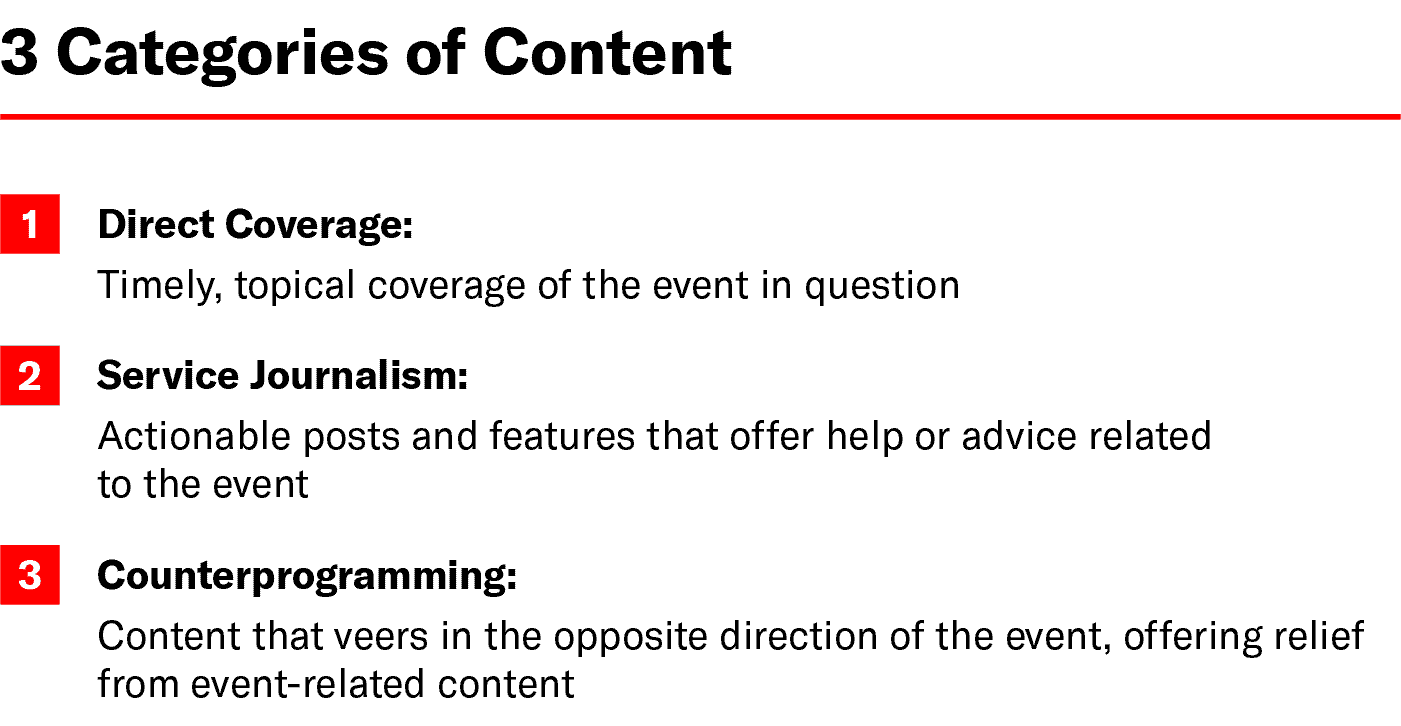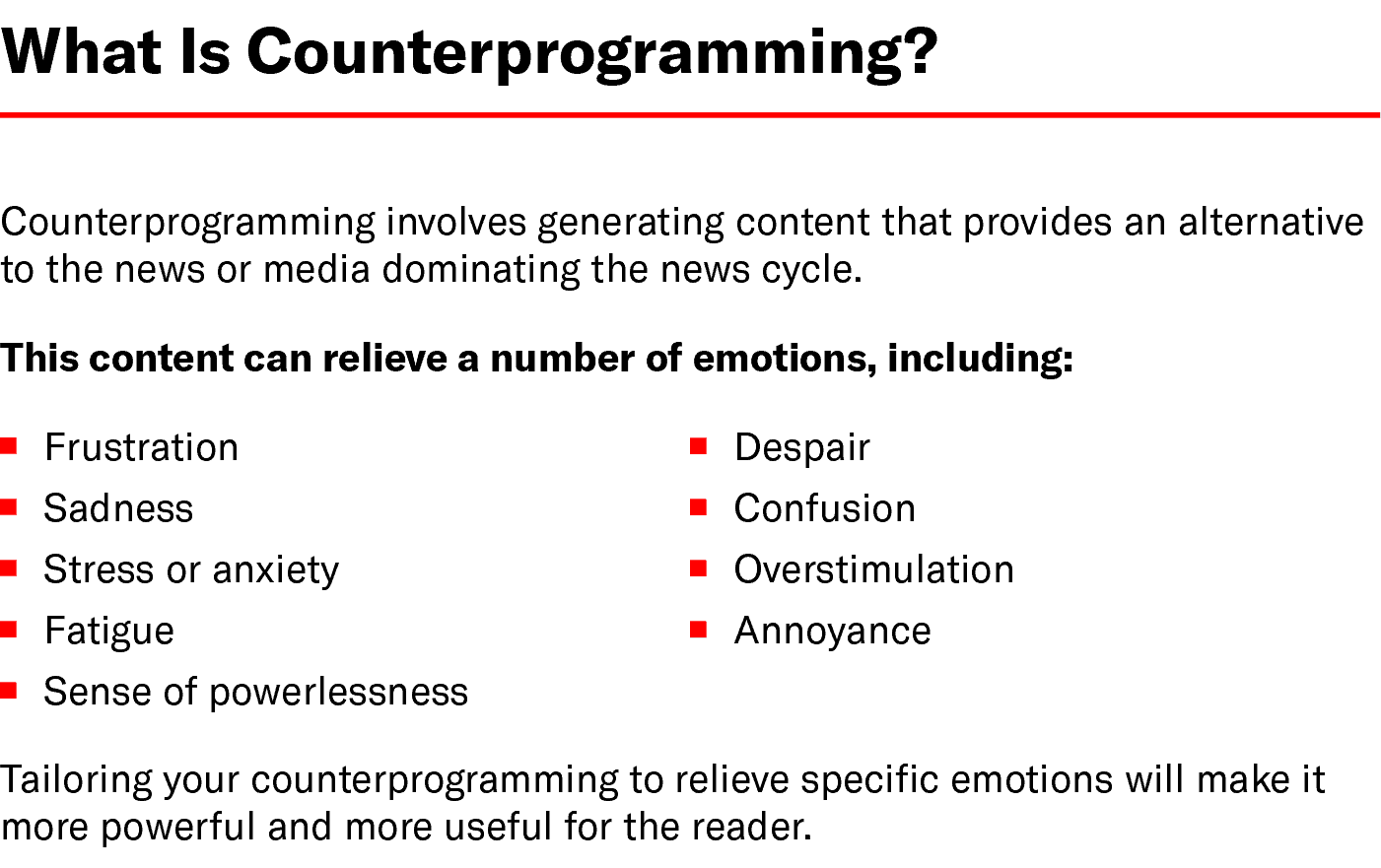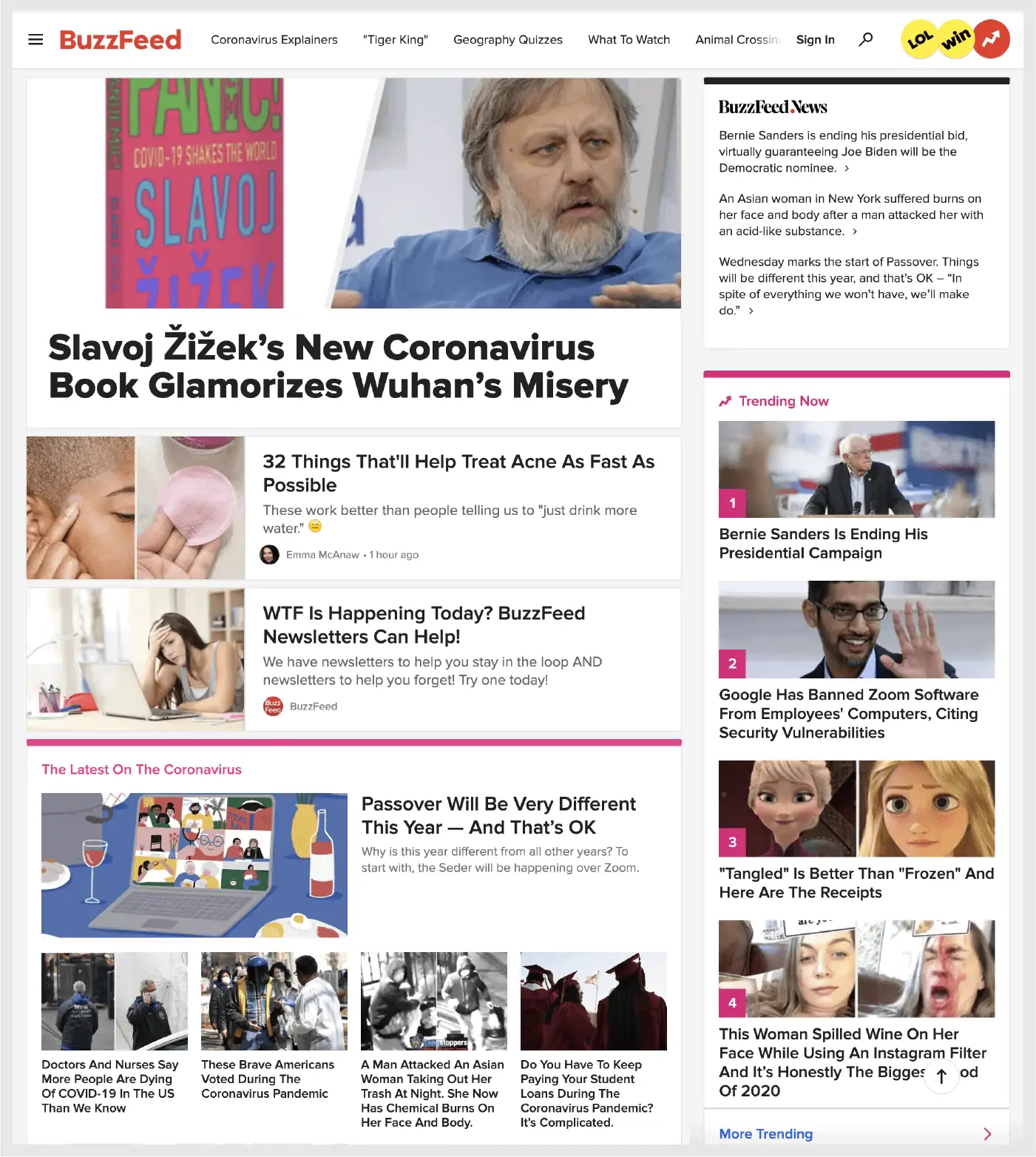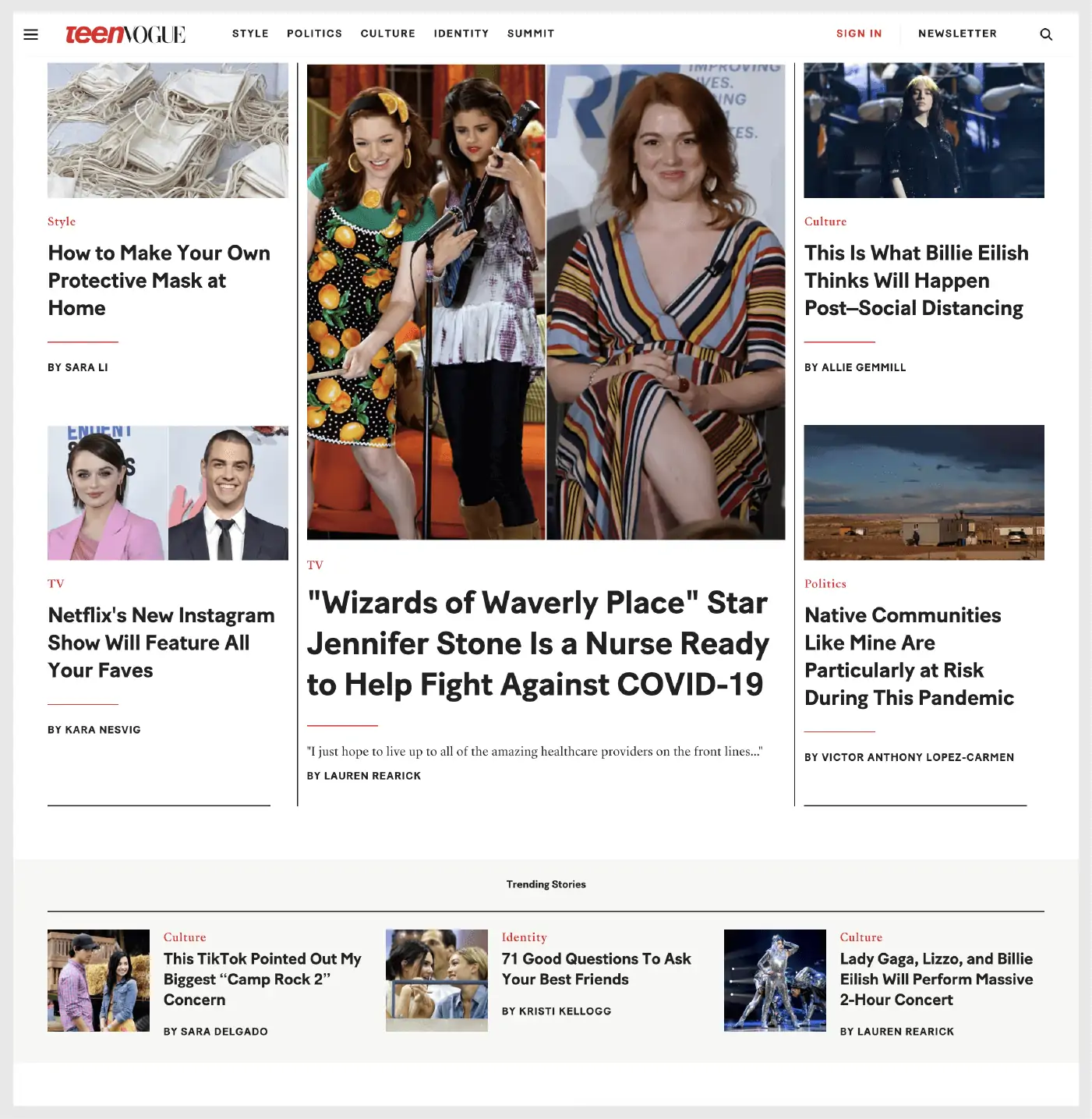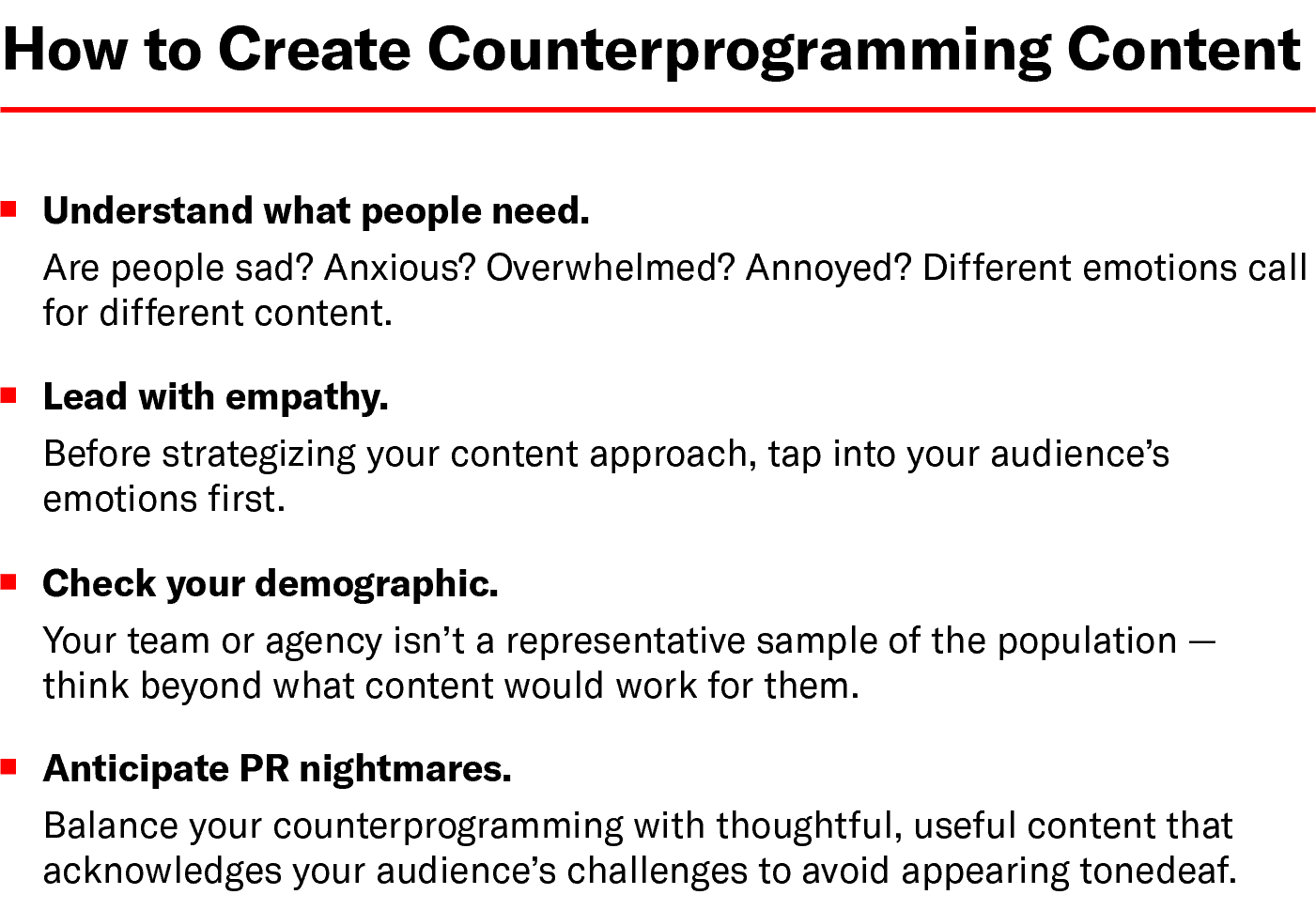It’s not hard to see why content marketing in the midst of the coronavirus pandemic has been a challenge.
With millions of Americans out of work and entire industries at a standstill, what felt like killer lifestyle or business content when you scheduled it back in January now feels totally irrelevant by comparison.
What’s worse: Continuing to create content as though the world hasn’t changed isn’t just bad strategy — it’s disingenuous, and it undermines your trustworthiness as a company.
But knowing what content not to create in the middle of a global crisis isn’t going to help fill the content calendar at the end of the day. So how do we determine what types of content do belong in the pitch queue in these unprecedented times?
Digital marketing is a comparatively young industry, but our content cousins in journalism have been around this block more than a few times and lived to tell the tale.
When it comes to crisis content, content marketers can learn a lot from journalists — not just how to gain coverage in the midst of a crisis, but how to earn coverage by designing content that offers genuine value to audiences in truly unprecedented situations.
A Three-Pronged Approach to Crisis Content
Before moving into agency work, I worked primarily in online media and happened to be on staff at a website called Upworthy during the final, tragic fall of Aleppo in December of 2016. As the world watched in horror while Syria’s largest city burned, our newsroom floundered for angles that were appropriate for the situation and made sense coming from a publication dedicated to “positive storytelling.”
At that time, Upworthy was under the leadership of a brilliant editorial strategist and former New York Times reporter named Amy O’Leary, who laid out a three-pronged content strategy that I have since learned is employed often by many newsrooms, both in times of crisis and day-to-day.
This strategy consisted of:
- Direct Coverage: Timely, topical coverage of the event in question
- Service Journalism: Actionable posts and features that offer help or advice regarding the reader’s needs related to the event
- Counterprogramming: Content that veers in the opposite direction of the event, accommodating demand for relief from event-related content
During coronavirus in particular, this strategy is being employed openly by publishers like BuzzFeed and GroupNine Media. It also can be identified easily in the coverage mix of many, if not most, other online publishers. Condé Nast, Hearst, New York Media, Vice Media and Bustle Digital Group are all media organizations whose publications employ this strategy to varying degrees.
Why is this important to content marketers? First of all, learning to evaluate prospects’ coverage in terms of these three content categories can help you understand what content your prospects are looking for and determine the best strategies for pitching them that content.
More importantly, by deconstructing these tactics and why they work, we can identify new opportunities to generate content that capitalizes on these strategies but hasn’t been created before.
How the Three Prongs Work
The reason that this strategy works so well is because its three prongs give content creators the opportunity to address nearly every reaction that an audience may have during a crisis.
Direct Coverage Addresses Fear
Humans’ natural instincts in the face of unfamiliarity include concern, fear, uncertainty, curiosity and confusion. These initial reactions generate the most demand for timely, accurate news coverage from all angles of the event.
Service Content Solves Problems
As a crisis endures, people’s needs expand from simple informational awareness to functional help and advice. Service-oriented content is designed to identify and provide actionable solutions to common crisis challenges, including:
- Logistical challenges to individuals, families, and communities
- Changes in finances or employment
- Desire to help those who are most impacted
- A need to adapt to new guidelines
- Strain placed on personal and professional relationships
- Mental and physical health detriments
- Attempts to maintain lifestyle under new crisis circumstances
Most marketing content is already service-oriented, but often content marketers are more practiced at solving logistical challenges rather than intangible or emotional ones. In a crisis, solving for people’s physical, functional, and lifestyle needs is only part of the puzzle.
Counterprogramming Offers Relief
The third prong of the strategy is, in itself, a form of service journalism, since counterprogramming against a crisis involves generating content that offers a break from “media burnout,” or the mental fatigue that comes from staying too plugged in to a particular news cycle.
Counterprogramming actually originated as a broadcast television tactic, designed to be employed when stations had to fill a time slot already dominated by another station’s stronger program. It’s still a popular strategy — just look at the success of Animal Planet’s Puppy Bowl as an alternative to the Super Bowl — and one that has also been adapted successfully for online media.
Crises elicit a variety of emotions, and counterprogramming content that acknowledges the nuances between these reactions will be far more effective. Of the three strategies, counterprogramming offers the most untapped opportunity for content marketers.
Counterprogramming in Action
Even though counterprogramming often involves emotionally lighter fare, it’s by no means easy. When done correctly, counterprogramming can be a massively successful tactic that leads to huge benefits for the user and major KPI wins for a brand.
Here are a few examples of publications employing successful counterprogramming strategies during the coronavirus outbreak:
Wired
Wired is an example of how even a publication whose focus is primarily direct news coverage still utilizes the other two content categories, even when an event like the coronavirus is dominating the news cycle.
We can see in the screenshot above that Wired’s coronavirus strategy focuses primarily on direct coverage of the pandemic. But when we look closer, we can see where service-style features find a place on the home page as well—titles that would fit well into a content marketer’s portfolio, like “How to Make Your Own Hand Sanitizer.”
Scrolling just slightly further, we see the counterprogramming content begin to appear in the mix — headlines totally unrelated to the news, like “Every Dog Breed Explained,” “How this Guy Stacks Playing Cards Impossibly High” and “Why This Taste Map Is Wrong.”
BuzzFeed
BuzzFeed is a great example of how a publication with an even content spread across news, service-oriented pieces, and counterprogramming balances the three.
The homepage offers up timely coverage courtesy of BuzzFeed’s news desk to the right, but the headline items are a more lighthearted split between service-oriented and counterprogrammed pieces offering an escape from the burnout of constant coronavirus coverage.
Teen Vogue
You need only glance at the home pages of all Condé Nast’s major media properties for good examples of these strategies, but Teen Vogue provides a great demonstration of how even brands that might seem ill-suited to address a serious crisis at all can still creatively carve out a content niche.
The magazine’s coverage doesn’t need to attempt Times-level reporting to hit all three content boxes — with a celebrity news update on the pandemic, some service-oriented content in the form of relationship advice and a virtual event, and entertainment counterprogramming courtesy of Issa Rae, Teen Vogue’s homepage deftly covers all of the bases for its audience.
The Counterprogramming Caveat
It should be noted that counterprogramming, as a strategy, isn’t a magic pill that will automatically earn you placements in the high-level prospects of your dreams. Rather, the coverage strategies these high-level sites use in a crisis can inform your brainstorming and pitch tactics when you’re generating content during a challenging time.
For example: Analyzing Teen Vogue’s editorial strategy may not guarantee you placement in Teen Vogue, but it will tell you a lot about what the professional strategists at Condé Nast have learned about what works with Teen Vogue’s audience. So by replicating those strategies at scale for a similar demographic, you can borrow a bit of the magazine’s success to use in your own work.
How to Develop a Strong Counterprogramming Strategy
When counterprogramming against a crisis, content creators have to be careful to offer a departure from the event in question without going so far as to be irrelevant or uninteresting. Brands also have to be careful that their attempt at lightening consumers’ moods doesn’t read as tasteless or tonedeaf in the midst of what may be, in many ways, a tragedy.
Here are four key tips for successful counterprogramming against a crisis:
1. Understand what people need.
Counterprogramming is about far more than simply assuming your audience is “sick of the news.” Even someone who says they are sick of the news is really saying that they don’t like how the news makes them feel.
Are people anxious? Sad? Scared? Overwhelmed? Overstimulated? Frustrated? Insecure? The answer may be “yes” to all of the above, but that doesn’t mean you need to address all of these emotions with the same piece of content. Understanding the emotional nuances of people’s responses to a crisis can be the difference between generalized, lackluster content and material that’s specific, unique, and offers genuine relief.
2. Lead with empathy.
The only way to really understand how your audience may be feeling is to practice empathy — and I mean actually, legitimately practice. Get into the habit of asking yourself questions about different people you interact with daily and how they might think, react or feel in a given situation.
This exercise is about more than just learning to identify broadly with people who are different than you. It’s about using your creative empathy strategically in order to drill down on people’s specific problems and challenges so you can figure out how to use content to solve them.
3. Check your demographic.
If you’re in an agency environment, you likely already practice outsourcing perspectives from your colleagues and teammates. When an athleticwear client signs, you’ll probably put your coworker who’s a former college athlete on the project. When you’re writing a survey about motherhood, you might run it past the parents in the office before you publish.
While this is often an effective exercise, be careful not to confuse your team for a representative sample of the population. If your office consists of primarily college-educated people aged 25–60, testing out a piece of content with your team won’t give you a complete picture of how it will be received among other demographics.
4. Anticipate PR nightmares.
When counterprogramming against a crisis, you run the risk of publishing something that veers too far into lighthearted territory and winds up coming across as completely tonedeaf.
One way to neutralize this risk is to remember to evaluate your counterprogramming content within the context of your brand’s comprehensive content strategy. A lighthearted, derivative post from a brand whose content mix includes a variety of service-oriented posts designed to help users cope with a challenging situation will be received a lot better than that same post from a brand that hasn’t made any effort to understand the problems of its consumers.
This is just one example of how content marketers can and should be looking outside of the industry for tips and best practices on adapting to unusual scenarios. While journalists are an obvious source of expertise in content creation, there are professionals in nearly every industry who are tasked with learning about, anticipating, and providing for consumers’ needs.
Whether it’s politics, commerce, economics, entertainment, or one of the many other industries that rely on predicting people’s desires, a savvy content marketer should always be on the lookout for lessons that can be drawn from other fields and used to gain an edge in their own work.


